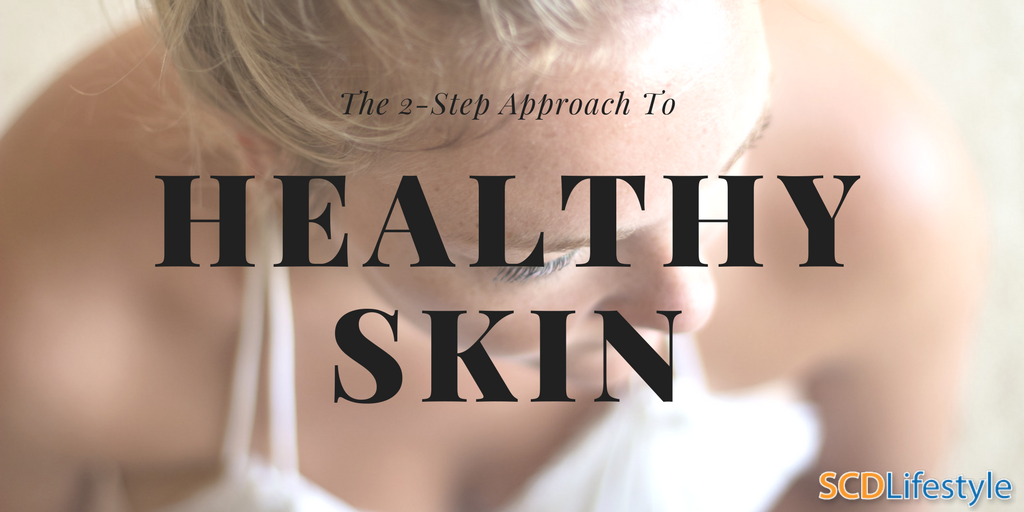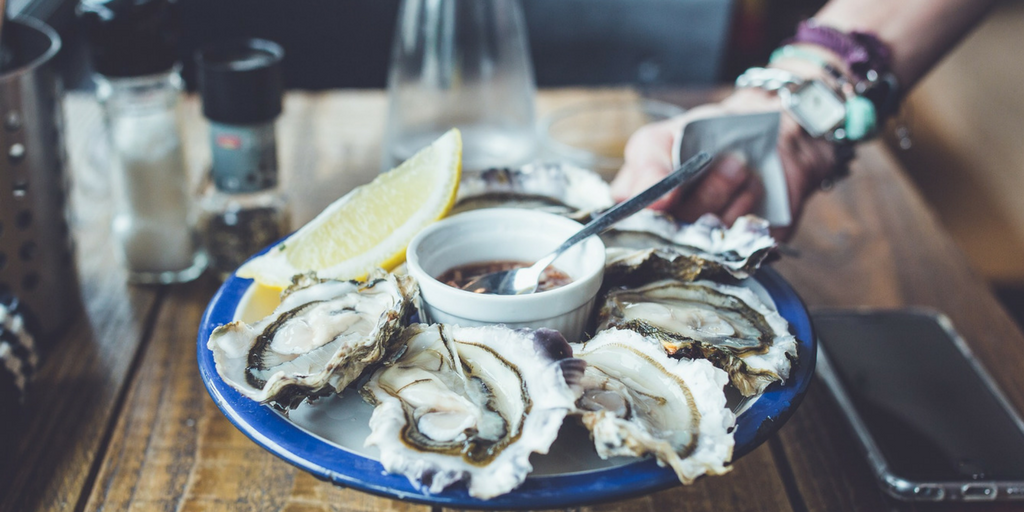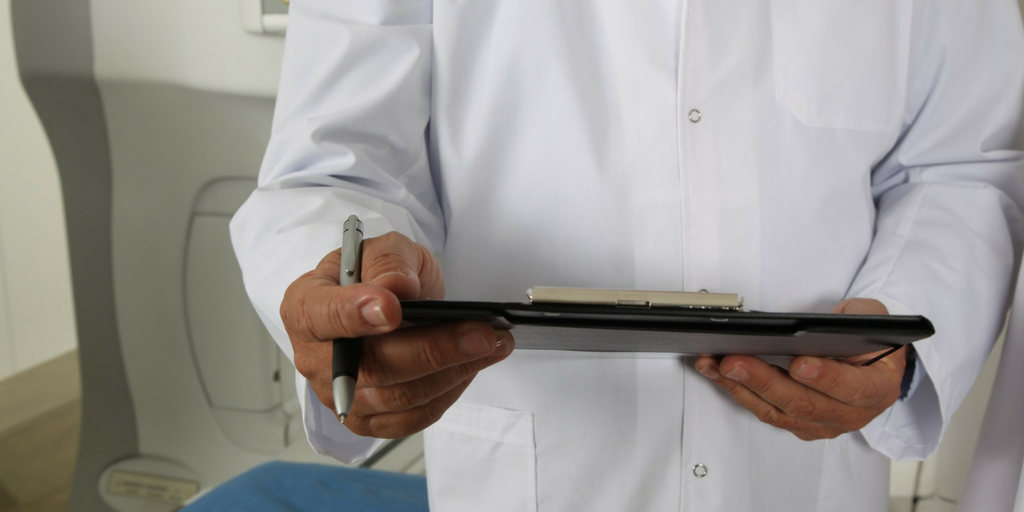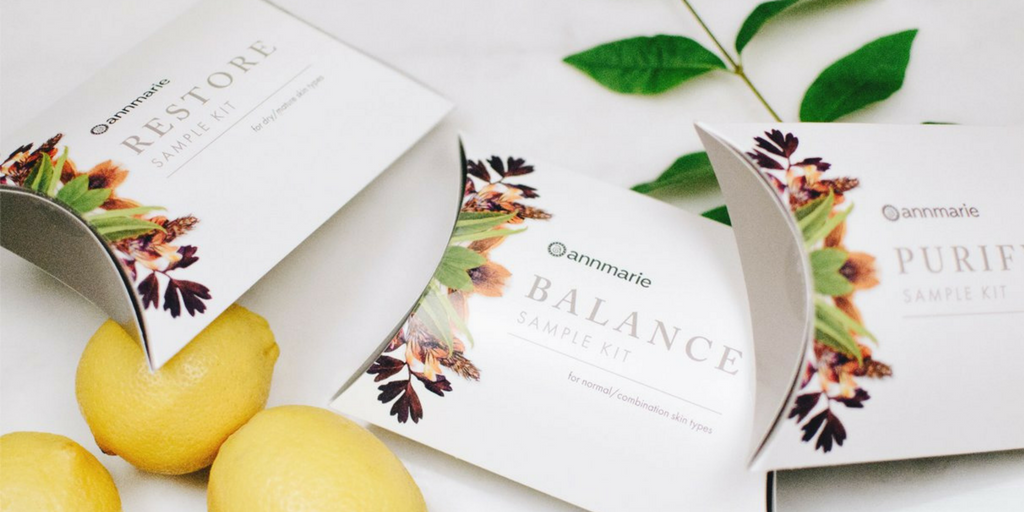The 2-Step Approach To Healthy Skin

Your skin is the first thing people see when they look at you (or you see when looking in the mirror).
You know that when your skin looks good, facing the world is a little easier.
That’s why having skin issues can be so frustrating and embarrassing.
(I know because I struggled with skin issues for years myself.)
But issues like acne, hyperpigmentation, and rosacea don’t just look bad – they’re often a sign of something more than skin deep. From nutrient deficiencies to hormones that are out of whack, and even leaky gut syndrome, there are many internal causes for external skin problems.
The health of your skin is one of the biggest indicators of your overall health. A healthy body is reflected in clear, radiant skin – and health issues are often reflected in a sallow complexion.
In this article, I want to share how I’ve approached my own skin issues – from the foods to eat and avoid, to the supplements that can help, and even what products to use and avoid.
Beautiful, radiant skin isn’t simply about what you put IN your body, or what you put ON your body – it’s about balancing both.
The Gut and Skin Microbiomes
You know about your gut microbiome already – it’s the trillions and trillions of bacteria that reside in your digestive system and control everything from how often you poop to your immune system.
But you also have a skin microbiome – like your gut microbiome, your skin microbiome is a colony of trillions of helpful (and sometimes harmful) bacteria that live on your skin’s surface.
Both your gut and skin microbiomes control the health of your skin – if either isn’t healthy, you’ll see negative effects in your skin.
The gut microbiome is clearly linked to issues like:
But an unhealthy skin microbiome can lead to the same problems – as well as others like dullness, dryness, excess oil production, redness, flaky skin, and more.
This is why approaching skin health both externally and internally is so important. If you clean up your diet and work on improving your gut health, but you continue to use skin products that disrupt your skin microbiome, you won’t have positive results. Likewise, you can have the most perfect skincare regimen – but if your gut microbiome is out of whack, you’ll still have skin issues.
Radiant Skin Starts With Your Gut

If your gut health isn’t thriving, your skin can’t thrive either.
But gut health doesn’t just impact the skin – the health of your gut impacts everything from your digestion, to your immune system, to your mental health. That’s why gut health is the true foundation of all healing.
Healing the gut may seem complicated, but at it’s core, it’s very simple: determine which habits you have that disrupt your gut health, then replace them with new habits that support your gut.
For most people, this looks like:
- Eliminating processed foods and replacing them with nutritionally-dense whole foods
- Learning to manage stress through habits like meditation and yoga instead of overeating or over-exercising
- Avoiding environmental toxins that disrupt the gut (like antibiotics) and using pro-gut supplements like probiotics
(These are big, general guidelines – if you need help figuring out how to customize these ideas for your own life, sign up for more info on gut healing here.)
Diet in particular is very important for healing the gut and getting healthy skin.
Does Junk Food Cause Acne?
The role of diet in skin health is very controversial.
You may have heard that foods like chocolate and pizza can cause acne.
But then you may have heard dermatologists debunk the idea as a myth, saying no one food causes acne or other skin problems.
Here’s the truth: while no one food causes acne for everyone, any one food can cause acne or other skin issues for you.
That’s because skin issues are part of an inflammatory response in the body – inflammation can be caused by stress, acute injury, and of course – by leaky gut. If you have leaky gut, loosening of the tight junctions in the gut wall can allow undigested food particles into the bloodstream. Under these circumstances, almost any food can become inflammatory for your body.
Even healthy foods can be inflammatory for some people – dairy, eggs, nightshades, and nuts are common foods that can trigger some people but not an issue for others.
The best way to find foods that could be triggering inflammation for you is with an elimination and reintroduction diet like SCD or a leaky gut diet.
Foods That Heal

Healing your gut microbiome isn’t just about taking out the wrong foods – it is also about adding in the right foods.
In addition to your normal diet, make sure you’re regularly consuming:
- Bone broth – Bone broth is rich in collagen, glycine, and other amino acids that make up the foundation of beautiful skin. You can make your own or buy a high-quality version.
- Fish oil – The Omega-3 fats in fish oil can help balance high Omega-6 intake (common in a Western diet). Omega-3 oils are also anti-inflammatory. If you aren’t regularly eating wild-caught fish, you can supplement with a high-quality fish oil.
- Probiotic-rich foods – Foods like homemade yogurt, sauerkraut, kimchi, kombucha, and kefir all promote an abundance of good gut bacteria. Here’s how to make your own yogurt or sauerkraut.
- Zinc-rich foods – Zinc supports healthy skin, but it is much more bioavailable in food than in pill form. Naturally zinc-rich foods include oysters, organ meats (grass-fed!), and pumpkin seeds.
Nurturing Your Skin Microbiome

Aside from caring for your gut microbiome, caring for your skin microbiome is one of the most important steps you can take to ensure you have healthy, beautiful skin.
But shockingly, most people have no idea what helps and what harms their skin microbiome (in fact, most adults I talk to don’t even know that they have a skin microbiome!)
There are 3 key steps to a healthy skin microbiome:
- Don’t overwash your skin! Taking daily (or more often) long, hot, soapy showers is actually harming your skin. The helpful bacteria that live on our skin work to keep your skin clean and healthy – overwashing diminishes these good guys and can even allow “bad” bacteria living on the skin to spread. If you must shower daily, consider skipping hot water and lots of soap. Use a gentle, natural soap only when and where necessary. Instead of a long, head-to-toe sudsing, I rinse off in lukewarm water daily, and save soap for every 2-3 days.
- Don’t be afraid to get dirty. Our skin microbiome picks up beneficial bacteria from the environment. But if you spend all your time sitting in a chair or covered with clothes, you might not be getting enough exposure. Don’t be afraid of skin-to-skin contact with other people and animals. Hug your sister and your dog. Lay in the grass in the park (no blanket!). Touch the earth. Dig in the sand and build a castle. It is good for you!
- Don’t put harsh chemicals on your skin (most important). By harsh chemicals, you might think I mean bleach or lye. While you definitely shouldn’t touch those, either, I’m actually talking about that bottle of lotion in your bathroom. Conventional skincare products are full of downright-scary chemicals, parabens, phtalates. These disrupt your skin microbiome and can disrupt your hormonal and adrenal systems as well. Just like you don’t want to eat highly-processed foods, you don’t want to put highly processed products on your skin either. A good rule? If you wouldn’t put it on your tongue, you shouldn’t put it on your skin. Check your products here: http://www.ewg.org/skindeep/
Unfortunately, some of these gut-healthy, skin-healthy habits are directly contradicted by Western dermatology practices.
Is Your Dermatologist Making Your Skin Worse?

If you go see a dermatologist about your skin issues, you might get some shocking advice:
- Harsh prescription medications like antibiotics, hormonal birth control, or Accutane
- Topicals like benzoyl peroxide, retinol, and hydroquinone
- Injectable fillers and paralytic agents like Botox
All of these products directly and indirectly impact the health of both your gut AND skin microbiome. While they might provide quick, short-term results, in the long-run they only mask symptoms and cause greater harm.
While only you and your doctor can decide if a medication or prescription is right for you, don’t be fooled into thinking the only solution to skin problems is harsh products. The first approach should always be supporting your gut and skin microbiome.
Use This, Not That

Particularly for the extra-sensitive skin on your face, you want to use the highest quality, gentlest products.
But, just because something says “natural,” “gentle,” or even “organic” does not mean it is safe. Use of these words isn’t regulated – meaning anyone can put these words on their packaging to sell more product.
If you want to take the best care of your skin microbiome, you’ll need to be diligent when shopping for natural products.
Personally, I usually use most of the same products in my bathroom as I do in my kitchen – Dr. Bronner’s Soap, apple cider vinegar, baking soda, raw honey, and coconut oil.
But, lately I’ve also been using a new skincare line I discovered – Annmarie Skin Care. Unlike a lot of other products available from health food stores and online, Annmarie products are actually things I would put on my tongue (not that I’m recommending that!)
And while using an ACV toner or coconut oil is easy, using Annmarie products feels luxurious – like a special treat for myself, one that is actually good for me.
Plus, they’re all-natural, eco-friendly, organic, and safe for your delicate skin microbiome.
I started with the Balance kit (for normal skin) and I liked it so much I ordered the Purify kit for my sister (for oily or acne-prone skin) and the Restore kit for my mom (for dry and more mature skin).
Each kit comes with a gentle cleanser and a treatment oil made from all-natural ingredients. I love it because it’s simple (just 2 steps) but really effective – I noticed an improvement in my skin’s texture and brightness within a couple days.
The right skin products – like Annmarie’s products – can really help improve the appearance of your skin from the outside without disrupting your skin microbiome.
Annmarie’s products are the first I’ve found that meet my own criteria for safety and actually work! I love them and I hope you will too – that’s why we’re teaming up with Annmarie Skin Care to bring you a really great deal: Order a sample kit for $19.99.
This means, if you like the products and buy a full-size item later on, you can use your coupon and it’s like having gotten your sample kit for free!
Plus, you’ll also get a bonus digital copy of Annmarie Skin Care’s newly updated Toxic Free Home Guide.
Check out this sample kits here.
Beautiful Skin, Inside & Out
Remember, there are 2 steps to achieving healthy, beautiful skin:
- Nourish your gut microbiome with a whole-foods diet customized to your own needs
- Nourish your skin microbiome by avoiding over washing and damaging products and using beneficial products
Your skin is too important to neglect or harm with dangerous products. It’s not just about what you eat or what you wash your face with – beautiful healthy skin is about both! I hope this article sets you on the path to glowing, healthy skin.
In health,
Steve
P.S. – I only endorse products I love – and Annmarie Skin Care makes the cut! Try a sample kit and let me know what you think. Get one here.
Did You Like this Article?
Subscribe to our newsletter to receive email notifications, some ways to find relief, and next steps.
